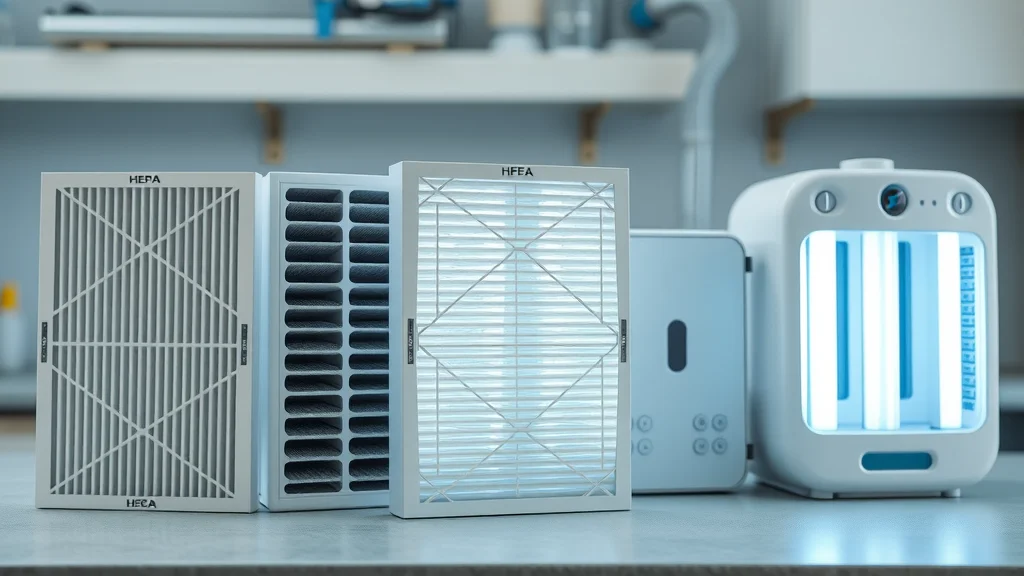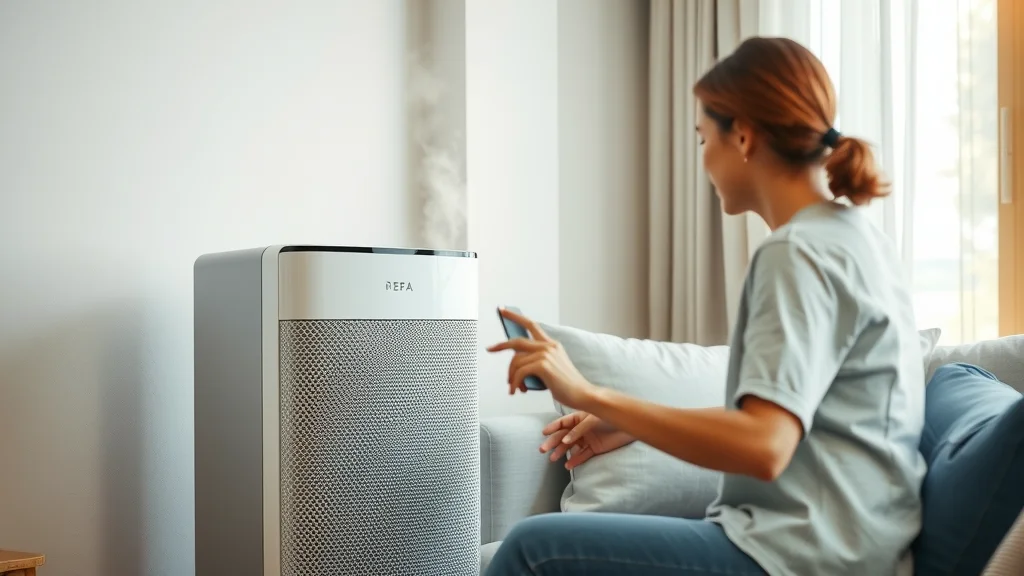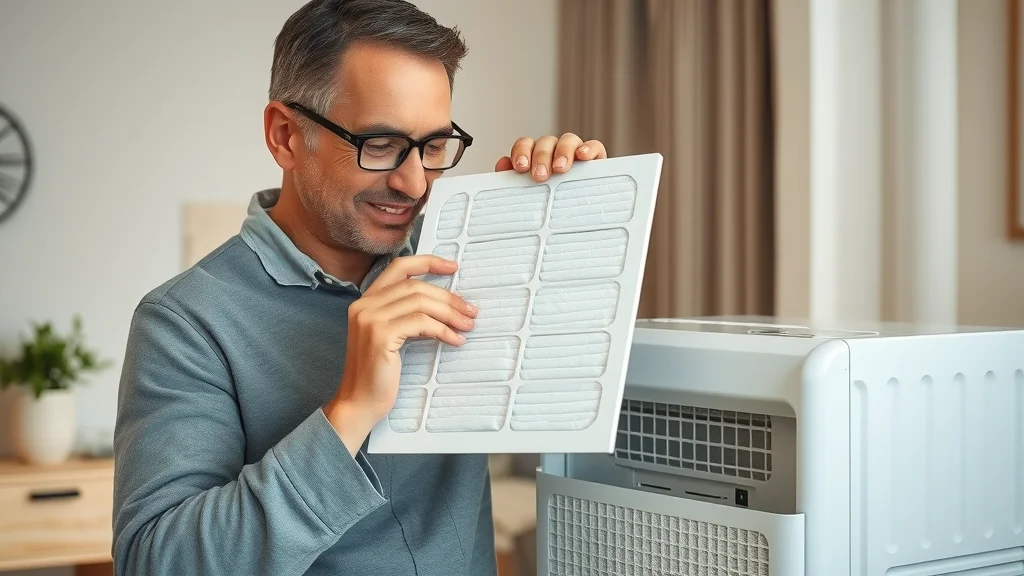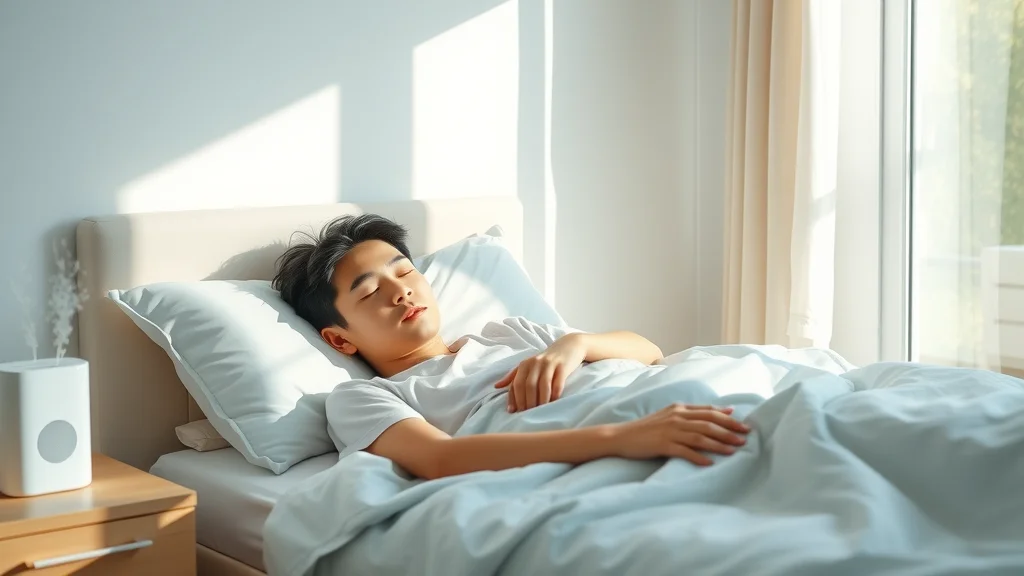Did you know that the Environmental Protection Agency (EPA) estimates indoor air can be up to five times more polluted than outdoor air? For over 25 million Americans with asthma, this startling fact means that the home can be one of the most dangerous spaces for triggering asthma symptoms. Fortunately, modern air filtration systems for asthma offer powerful solutions to transform your home into a safe haven with cleaner, easier-to-breathe air. In this article, discover actionable insight, practical comparisons, and essential tips for choosing and using air cleaners that can help control asthma—right now.
A Startling Truth: Asthma and the Need for Air Filtration Systems
Asthma is one of the fastest-growing chronic health conditions worldwide, often triggered or worsened by poor indoor air quality. The culprits? Invisible particles: dust mites, pet dander, mold spores, and volatile organic compounds released from common household items. Even pollen that sneaks indoors can set off dangerous asthma symptoms. The reality is that every breath you take inside your home can bring unwanted irritants straight into your lungs, especially if you or your loved ones are asthmatic.
That’s why investing in high-quality air filtration systems for asthma isn’t just about comfort—it’s about protecting your health daily. Unlike standard air filters in your HVAC system, dedicated air purifiers and air cleaners are designed to remove the tiniest asthma-triggering particles from the air you breathe. They work tirelessly, filtering your room air and supporting your body’s natural defenses. Keep reading for clear advice on finding the best solution for your home and your family’s well-being.

What You’ll Learn About Air Filtration Systems for Asthma
- The link between indoor air quality and asthma symptoms
- Different types of air filtration systems for asthma sufferers
- How to choose the best air purifier or air cleaner for your needs
- Expert tips on enhancing room air quality with air filters
- Answers to top questions about air filtration and asthma
Understanding Asthma and the Importance of Air Filtration Systems for Asthma
Asthma is a condition where the airways in your lungs become inflamed and narrow, making breathing difficult. Triggers vary—from pollen to pet hair—but indoor pollutants like dust mites, mold spores, and even microscopic particles from cleaning products can be some of the worst offenders. These airborne threats are often invisible, yet they can make an asthmatic’s life miserable, causing wheezing, coughing, and even severe attacks. Without adequate air cleaning, every inhale inside your home could mean exposure to asthma triggers.
That’s why air filtration systems for asthma, like advanced air purifiers and specialized room air cleaners, are essential for households affected by asthma. These devices are engineered to capture and remove allergens and irritants from indoor air, targeting the particles too small for ordinary air filters. Evidence shows that using asthma-focused air cleaner technologies significantly reduces the risk of allergy and asthma flare-ups, giving you cleaner air and real peace of mind at home.

How Poor Indoor Air Quality Triggers Asthma Symptoms
The air inside your home may seem harmless, yet it can harbor a mix of particulate matter, volatile organic compounds (VOCs), and biological allergens—each capable of worsening asthma symptoms. Dust, smoke, and even fumes from common household cleaners or paint can trigger an asthma response. For some, everyday substances such as pet dander or dust mite particles are enough to send asthma symptoms spiraling out of control. As these particles accumulate, they reduce the indoor air quality, putting strain on the lungs and posing risks—especially to children, seniors, and those already managing respiratory conditions.
Luckily, modern air filtration systems for asthma are now more effective than ever at capturing these tiny threats. Advanced air purifiers equipped with HEPA filters or activated carbon traps remove small particle pollutants and reduce irritants known to induce coughing, wheezing, and other allergic reactions. Consistent operation of these air cleaners helps transform your living space into a sanctuary of clean air, free from the unseen particulates that worsen asthma. The key is choosing a system that is certified to remove the right mix of particles and gases, keeping your indoor environment healthy year-round.
Overview of Air Filtration Systems for Asthma
The right air filtration system for asthma can mean the difference between restless, congested days and calm, easy breathing. Several core technologies are available to help you remove allergens from your room air. HEPA air purifiers remain the gold standard—trapping up to 99.97% of irritant particulates such as pollen, dust mite debris, and mold spores. Activated carbon air cleaners focus on absorbing gases and odors, including harmful chemicals and VOCs, making them ideal for sensitive asthmatics. Other technologies, like UV-C filters and electrostatic precipitators, offer targeted protection against microbes or larger particles, but results can vary.
Each type of air cleaner and air purifier offers unique advantages, so assessing your specific triggers and needs is crucial. Do you need a system capable of filtering chemicals, or is your primary concern controlling biological allergens? Some room air cleaners offer multi-stage filtration systems that combine HEPA, carbon, and even UV elements to deliver comprehensive clean air. Remember: not all air filters are created equal, so reading specifications, looking for asthma-specific certifications, and consulting your healthcare provider should guide your purchase for optimal protection.

HEPA Air Purifiers: Leading Air Filtration Systems for Asthma
“HEPA filtration remains the gold standard for removing particulates that trigger asthma symptoms.” – Dr. Emily Rhodes, Allergist
High-Efficiency Particulate Air (HEPA) filters are at the heart of most effective air purification strategies for asthma. To be certified as “HEPA,” a filter must capture at least 99.97% of airborne particles as small as 0.3 microns—a size that includes most allergens, dust mite waste, pollen, and even some bacteria. These air filters are ideal for removing the microscopic particles most likely to inflame sensitive lungs. Unlike regular HVAC or furnace filters, HEPA air purifiers are specifically engineered to provide continuous clean air delivery in living and sleeping areas, making a noticeable difference in air quality for asthma sufferers.
When selecting a HEPA air purifier, prioritize models that clearly state their Clean Air Delivery Rate (CADR), room coverage, and filter life. Asthma-friendly models often feature sealed designs and quiet operation, ensuring that particles from the air are captured efficiently without disturbing your household. For best results, use your HEPA air purifier in the rooms where you spend the most time—such as bedrooms and living rooms. This targeted use provides the most significant relief from airborne asthma triggers.

Activated Carbon Air Cleaners and Asthma Management
While HEPA filters target particulates, activated carbon air cleaners focus on gases and odors. These systems use porous carbon material to absorb a range of pollutants—not just visible smoke or foul smells, but also hazardous volatile organic compounds (VOCs) released from paints, cleaning products, and furniture. Since some asthmatics are acutely sensitive to these airborne chemicals, adding a room air cleaner with an activated carbon stage can mean fewer asthma flare-ups and more consistent comfort at home.
It’s common to find air purifiers that combine HEPA and activated carbon filters for maximum asthma defense. This combo ensures both particulates and chemical irritants are efficiently removed from your room air. Maintenance is straightforward: the carbon filter typically needs less frequent replacement than the HEPA stage, but always monitor for reduced odor removal or airflow—the first signs it’s time to swap out this layer. Balanced together, these technologies help deliver cleaner air and more peace of mind for asthma-prone households.
Other Room Air Cleaner Technologies for Asthma
In addition to HEPA and carbon filters, other air cleaner technologies are available—each with its own merits for asthma management. UV-C light filters, for instance, use radiation to eliminate airborne microbes and mold, reducing the bio-burden in your home. Electrostatic precipitators and ionizers, on the other hand, charge and trap large particles from the air through static electricity. However, it’s crucial to select models that do not produce ozone, as ozone can irritate sensitive airways and worsen asthma symptoms.
Whole-house options and furnace-based air filters may also improve your baseline indoor air quality, but portable room air cleaners with multi-stage filtration remain the best choice for targeted asthma relief. Always check for certifications, like those from the Asthma & Allergy Foundation of America, and consult your medical provider if you are considering cutting-edge purifiers—especially those that promise “ionic” or “plasma” cleaning, as their ozone emission levels should be below federally recommended thresholds.
Comparing Air Filters and Air Cleaners: What’s Best for Asthma?
| System Type | Main Function | Asthma Benefit | Cost | Maintenance |
|---|---|---|---|---|
| HEPA Air Purifiers | Particulate removal | Excellent | $$ | Moderate |
| Activated Carbon Air Cleaners | Gas/odor removal | Good | $$ | Low |
| UV-C Filters | Microbe elimination | Moderate | $ | Low |
| Ionizers/Ozone Generators | Particle aggregation/odor elimination | Variable | $ | Low |
This table summarizes the core options for air filtration systems for asthma. For most users, HEPA air purifiers and activated carbon air cleaners offer the best balance of effectiveness and safety. Always invest in systems certified for asthma care and avoid those that may produce ozone, which can be harmful for respiratory health.
Selecting the Best Air Filtration System for Asthma in Your Home
- Assess room air size and coverage needs
- Check clean air delivery rate (CADR) for particulates
- Evaluate filter life and replacement costs
- Consider additional asthma features (e.g., smart sensors, sealed systems)
- Ensure certification by asthma and allergy associations
Choosing the right air filtration system for asthma starts with matching the purifier’s capacity to the size of your room air environment. Always check the manufacturer’s suggested area—most experts recommend slightly oversizing to ensure complete coverage and maximum delivery of clean air. The Clean Air Delivery Rate (CADR) gives you a quick way to compare how efficiently a purifier or air cleaner removes dust, pollen, and smoke—the higher the rating, the better the system at keeping your air clear of asthma triggers.
Don’t overlook the ongoing costs: HEPA filters and activated carbon filters require regular replacement, so factor in maintenance needs and filter availability. Some leading models come with special features like air quality sensors, digital displays, or even app-based controls to help you monitor performance. Sealed systems prevent particles from leaking back into your air, and official certifications provide peace of mind that your investment is medically effective and safe. Take the time to research and select a system supported by both clinical recommendations and real-world reviews.

Where to Place Air Filtration Systems for Maximum Impact on Asthma
Proper placement of air filtration systems for asthma is crucial for optimal results. Start by targeting the rooms where you and your family spend the most time, such as bedrooms, living rooms, and nurseries. Since asthma symptoms often worsen at night, make sure to install a HEPA air purifier in each bedroom for uninterrupted relief. Avoid placing purifiers behind furniture or curtains—obstructions reduce airflow and limit the effectiveness of your air cleaner.
Also, location in relation to sources of pollution or allergens can make a difference. For instance, if you keep pets, place the air purifier where dander is most likely to accumulate. In open-plan living spaces, position units close to the breathing zone (not near the floor) and avoid corners. For homes with multiple floors, consider using more than one room air cleaner to maintain consistent clean air throughout the house. By maximizing coverage and airflow, you help ensure every breath is as pure and protected as possible.
Maintenance of Air Filtration Systems for Asthma: Tips and Best Practices
- Frequency of air filter replacement
- Signs your air purifier needs attention
- Cleaning routines for various air cleaners
Even the best air filtration systems for asthma are only as effective as their maintenance routines. On average, HEPA filters need to be replaced every 6–12 months, while carbon filters last about 3–6 months—check your manufacturer guidelines for specifics. Don’t ignore warning lights or sudden drops in airflow: these are signs your air cleaner is overdue for attention. Some systems come with digital reminders or built-in sensors to help you stay on track.
Regular cleaning—wiping the exterior, dusting vents, and vacuuming pre-filters—keeps your air purifier running efficiently. Never ignore the cleaning schedules or attempt to wash disposable HEPA filters; doing so can reduce their effectiveness. Consistent maintenance guarantees your investment continues working at peak performance, providing room air that keeps asthma triggers at bay and your loved ones safer every day.

The Science Behind Air Filtration Systems for Asthma
The effectiveness of air filtration systems for asthma is grounded in science. HEPA filters capture particles as small as 0.3 microns, trapping allergens and irritants—including dust mite debris, pollen, and mold spores—before they ever reach your lungs. Activated carbon filters use a process called adsorption (not absorption) to bind odor molecules, smoke particles, and dangerous VOCs from indoor air. UV-C technology, often found in more advanced systems, uses short-wavelength light to disrupt and neutralize bacteria and viruses on contact.
These technologies work together to provide multiple barriers for asthma triggers, ensuring your indoor environment surpasses minimum air quality standards. Certified systems must pass rigorous testing, often performed or verified by agencies such as the Environmental Protection Agency or independent labs. By understanding the principles behind each filter type, you can select the solution that best fits your household’s needs for clean air and improved respiratory health.

This animated video demonstrates how HEPA and Activated Carbon air filtration systems tackle allergens and particulates linked to asthma symptoms in real-world home environments, making the science behind clean air clear and approachable.
Do Air Purifiers and Cleaners Really Help With Asthma?
The short answer: yes. Research and clinical experience show that air purifiers and air cleaners designed for asthma significantly lower airborne allergens and irritants, leading to measurable reductions in asthma symptoms. However, not all systems deliver the same benefits. Devices equipped with HEPA filters and certified for asthma and allergy care are consistently more effective in clinical trials. Combined with diligent use and proper placement, these technologies help families reclaim home spaces from hidden respiratory threats.
Keep in mind: No air filtration system can replace medications or eliminate every asthma trigger, but they offer substantial support in your overall asthma management plan. Consult your healthcare provider to confirm which solution best complements your treatment, and always follow your action plan for severe symptoms or attacks.
Watch this short clip for real-life stories of families using air filtration systems for asthma to achieve remarkable relief from asthma symptoms—and learn why experts continue to recommend these technologies for most households dealing with allergy and asthma challenges.
People Also Ask: Answers on Air Filtration Systems for Asthma
Which air filter is best for asthma?
The best air filter for asthma is a certified HEPA filter. HEPA filters are scientifically proven to capture 99.97% of particles as small as 0.3 microns, such as dust mites, pollen, mold spores, and pet dander. When combined with activated carbon, they can also reduce odors and chemicals. Choose HEPA air purifiers that are certified by allergy and asthma organizations, and ensure the clean air delivery rate (CADR) matches your room’s size.
Do air purifiers actually help with asthma?
Yes, air purifiers designed for asthma can make a significant difference. Studies show that air purifiers with HEPA and activated carbon filters reduce airborne allergens and chemical irritants, both of which commonly trigger asthma symptoms. The key is to use your chosen system in the rooms where you spend the most time and maintain air filters regularly for continued effectiveness.
What’s better for asthma, humidifier or air purifier?
An air purifier is better for asthma than a humidifier, as it directly removes particulates and allergens from the air. Humidifiers only add moisture and may worsen symptoms if not cleaned properly, as excess humidity can foster mold and dust mites. For asthma, prioritizing clean air through filtration is the best approach.
What air purifiers do allergists recommend?
Allergists recommend HEPA air purifiers that are certified by organizations like the Asthma and Allergy Foundation of America or the European Centre for Allergy Research Foundation (ECARF). They look for models with sealed systems, adequate CADR ratings, and a combination of HEPA and activated carbon filters. Avoid units that generate ozone, as ozone may trigger or worsen asthma symptoms.
Top Tips for Getting the Most Out of Air Filtration Systems for Asthma
- Choose the right size air purifier for your room air space.
- Replace or clean air filters regularly to maintain clean air and avoid asthma symptoms.
- Run air cleaners continuously, especially in sleeping and main living areas.
- Avoid products with ozone generation or unsafe emissions.
- Monitor your indoor air quality regularly.

Common Misconceptions About Air Filtration Systems for Asthma
- Myth: Air purifiers instantly cure asthma (fact: they help manage symptoms, not cure)
- Myth: All air cleaners are the same (fact: technologies differ significantly in efficiency and safety)
- Myth: Maintenance is unnecessary (fact: filters must be replaced for optimal function)
FAQs: Air Filtration Systems for Asthma
- How often should I change air filters for asthma?
For asthma care, change HEPA filters every 6–12 months and activated carbon every 3–6 months. Always check your system’s guidelines for optimal results. - Can air purifiers remove viruses as well as allergens?
Many HEPA air purifiers capture viruses, but not all. Look for medical-grade or certified options for best protection against both allergens and microorganisms. - Is portable room air filtration enough for my whole house?
Portable room air cleaners are effective for individual spaces. For whole-house protection, consider integrating a central air filtration system or using multiple units to cover all critical areas.
Key Takeaways: Air Filtration Systems for Asthma
- HEPA air purifiers and quality air cleaners substantially reduce asthma triggers.
- Proper placement and maintenance are critical for air filtration effectiveness.
- Selecting certified air filtration systems for asthma is an investment in health.
Final Thoughts on Air Filtration Systems for Asthma
Clean air is a foundational step for managing asthma at home. With the right air filtration system, you can confidently reduce triggers, breathe easier, and enjoy peace of mind knowing your family is protected every day.
Reach Thousands of Local Home Owners in Eustis – Advertise Your Air Filtration Solutions With Us!
Local business in the Eustis area? Reach out to us to advertise and connect with thousands of local homeowners seeking the best in air filtration systems for asthma and healthy homes!
To enhance your understanding of air filtration systems for asthma, consider exploring the following resources:
-
“Best Air Purifier for Asthma | IQAir”: This article delves into how air purifiers can alleviate asthma symptoms by removing harmful particles from the air, including allergens and pollutants. It highlights IQAir’s HyperHEPA filtration technology, which captures ultrafine particles down to 0.003 microns, offering protection against various respiratory-related conditions. (iqair.com)
-
“Air Purifier for Asthma: Benefits, How to Use One”: This resource provides insights into the effectiveness of air purifiers in managing asthma symptoms. It discusses the role of HEPA filters in removing small particles like dust mites, mold spores, and pet dander, which are common asthma triggers. The article also offers guidance on selecting the right air purifier and emphasizes the importance of regular maintenance for optimal performance. (verywellhealth.com)
If you’re serious about improving indoor air quality to manage asthma, these resources will provide valuable information and guidance.

